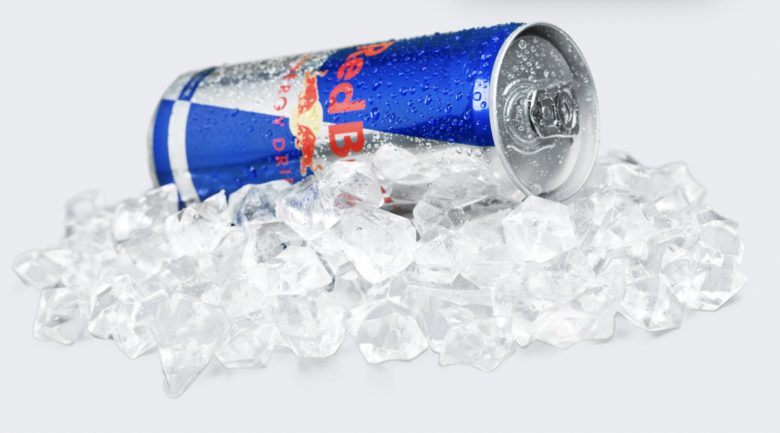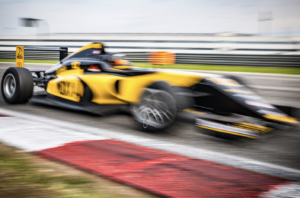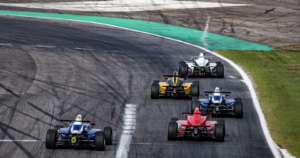Expert aeronautical engineering secrets are being probed. Laughable question? “Is it true you can see the airflow?”
“No, of course not,” he says.
Apparently he can.
“I can picture it,” Newey adds. “And if I try to be objective, that’s perhaps one of my strengths – that I can actually picture things well in my mind’s eye.”
Are “certainly not unique – we have got several great engineers now who can also do that” . He owes his success to genetics and environment.
Dad was a vet “had a great interest in maths and engineering” and mom was “very artistic”.
“That’s ultimately what you need – that combination of the creative, artistic side, measured with an engineering discipline and analytical side,” adds.
At 11, Newey designed and built metal and fibreglass racing cars over “very long, lonely summer holidays”.
I was unknowingly drawing, sketching, and creating in 3D. Making it 3D was crucial.
“Then, if you take the 10,000-hour rule, there I was kind of in an unwitting way practising that from a very early age.”
Red Bull’s performance was ‘completely unexpected’
Max Verstappen’s Red Bull RB19 squad had the finest F1 season ever.
Adrian Newey chuckles. The best Formula 1 designer, who led Red Bull to a record triumph, is being questioned about his inventiveness.
Expert aeronautical engineering secrets are being probed. Laughable question? “Is it true you can see the airflow?”
“No, of course not,” he says.
Apparently he can.
“I can picture it,” Newey adds. “And if I try to be objective, that’s perhaps one of my strengths – that I can actually picture things well in my mind’s eye.”
Are “certainly not unique – we have got several great engineers now who can also do that” . He owes his success to genetics and environment.
Dad was a vet “had a great interest in maths and engineering” and mom was “very artistic”.
“That’s ultimately what you need – that combination of the creative, artistic side, measured with an engineering discipline and analytical side,” adds.
At 11, Newey designed and built metal and fibreglass racing cars over “very long, lonely summer holidays”.
I was unknowingly drawing, sketching, and creating in 3D. Making it 3D was crucial.
“Then, if you take the 10,000-hour rule, there I was kind of in an unwitting way practising that from a very early age.”
Red Bull’s performance was ‘completely unexpected’
Max Verstappen’s Red Bull RB19 squad had the finest F1 season ever.
Red Bull’s chief technology officer, Newey, inspires F1 vehicle engineers.
The car’s performance hinges on how its surfaces interact with air as it charges around a grand prix course, pausing, twisting, pitching, sliding imperceptibly, and accelerating with its driver at its limits.
The field’s greatest downforce is consistently maintained.
Williams, McLaren, and Red Bull vehicles developed by Newey have won 12 drivers’ and 11 constructors’ world titles since 1992.
Newey blushes at such a kind gift. He avoids exposure, but this BBC Sport interview was special.
Despite inventing iconic cars like the Red Bull, Newey believes “F1 is clearly not about one person, and developing the engineering team and working with that team has also been a huge satisfaction”.
Newey describes this year’s success—20 wins in 21 races, 18 for Verstappen, and maybe another in Abu Dhabi this weekend—”totally unexpected”.
He adds “We fully expected this year that everything would close up.” Last season’s second half was dominated by Red Bull.
With F1’s 2021 rule change, “we managed to get the fundamentals of the car right” after 40 years, helping Red Bull.
“The good thing about that was it allowed us to take an evolutionary approach, to understand the strengths and weaknesses of last year’s car and try to address that appropriately,” adds.
At rule modifications in 1998, McLaren, and Red Bull in 2009 and 2022, Newey set the standard for most teams.
“We have managed to read regulations changes well,” adds, “and come back with a car we can then evolve.”
Evolution this year?
Newey: “Weight loss was part of it.” We never reached the weight restriction last year. Weight reduction and aerodynamics were our winter focus after the season.”
This past two years have focused on the Red Bull’s sidepod design, which employs a deep undercut alongside the driver to channel air around the car’s sides and a strong downward slope on top as it reaches the rear.
These optimize the floor together with front and rear suspension. Recent F1 vehicle successes are below.
Two venturi tunnels—long, thin wings on each side of the chassis—accelerate airflow between the vehicle and the ground, providing low pressure that pushes the car into the track.
“It’s all about trying to condition the flow to give the best performance to the underbody,” hes. “Most of what you see is as always to control the front-wheel wake, which in any open-wheel racing car is a big thing, and maximising the shape of the underside is the key to the whole thing.”
History lessons
Why did Red Bull discover this strategy first?
No other F1 designer worked in the early 1980s with venturi tunnels than Newey. His intellect helped.
Newey said Red Bull has little ‘porpoising’ or ‘bouncing’ in 2022.
Low pressure drives venturi cars down, but when it gets low enough, the airflow disturbs and the car bounces up, eventually driving it down again.
Last year, optimizing downforce without this was difficult.
“I think we settled on [the vehicle design] for a mix of factors – trying to look at flow physics and comprehend what we believed was essential,” I was amazed nobody saw that coming because it was a ’80s issue.
I became an aerodynamicist for Fittipaldi, a small F1 team run by Harvey Postlethwaite. The front of early ground-effect automobiles was rigid, so we replaced springs and dampers with bump rubber in 1981 to reduce weight.
We implemented the solution at Silverstone, my first track visit as a test worker. Keke Rosberg’s vehicle bounced so much near the pits you could see daylight under the front tires.
That showed how easily you might mess up and cause aerodynamic bounce. Also affects suspension and bodywork rigidity.
“In that first test at Barcelona last year, it was very apparent that lots of people hadn’t considered that at all.”
Very amazing. Red Bull has a flat organization, with technical director Pierre Wache leading an amazing engineering team, according to Verstappen Newey.
Without him, could they thrive?
“Erm, I’m not the person to ask,” he adds.
Has he humility?
“I enjoy trying to be creative – standing at my drawing board as everybody knows, and trying to come up with things,” adds. “But also I very much enjoy working with the team and that’s the culture we try to promote and embrace.”
Red Bull has won 38 of 43 races since regulation. Sergio Perez has four wins, Verstappen 34.
Newey states “a great driver, a good car and a good engine – if one of the ingredients is weak, you might snatch the odd win here and there, but you won’t win the championship” to win world titles. The car and Verstappen’s contribution to their success this year are unknown to him.
After a disappointing season, Perez finished second in the drivers’ championship despite overworking. Red Bull succeeds largely with vehicles.
Newey adores Verstappen.
“I’ve worked with several exceptional drivers,” he says, “and although their personalities vary, like their approach to debriefs after each session, they always drive with mental reserve.
They can drive the vehicle with enough capacity to think about how they’re using the tires, how the race is going, when to push, when not to push, and now, especially with these vehicles, how to adjust the electronics settings to fit the car’s behavior. Max excels at that.”
An excuse for Senna and Alonso
Two years before, Newey had a terrible accident at 65 in December. After drifting off the route and hitting a boulder, he shattered his skull while biking home from a restaurant at night on vacation.
He thinks about life?
“I think I am too pig-headed and stupid to do that,” he says.
Newey works on F1, Red Bull’s track car and submarine projects, and Alinghi America’s Cup at retirement age.
“Retirement is a funny thing, isn’t it?” Newey says. “whether you had asked me at 50 whether I would still be working, I would have responded, ‘No, certainly not.’
Events make you think, ‘I’m loving it and what else would I do?’ Beaching bored me.
Bernie Ecclestone and Roger Penske are my heroes despite their ages.
I inquired their secret since I knew them. I said, “Keep working.” Train your mind like a muscle. Additional evidence supports this.
After retiring at 65, my father undoubtedly became lost. He probably wouldn’t mind my stating that.
They fill my brain. A lot goes into F1. I still adore it. After 10 years of wanting to be a motor racing engineer, I want to continue.”
We talk about his regrets, drivers he wanted to work with, and changes He would have made.
He instantly mentions Ayrton Senna, who died in a Newey-designed Williams vehicle in his third race for the company in the 1994 San Marino Grand Prix.
“Well, clearly first and foremost to have had a longer relationship with Ayrton,” he explains.
“In terms of drivers, Fernando [Alonso] is one I have always…”
I say Red Bull almost had him. He and you made a deal in a vehicle at Spa airport following the 2013 Belgian Grand Prix.
“You have a good memory,” Newey smiles. “I love Fernando and regret it never happened.
I value the present and future.
“Regrets? No. Thankful to have worked with and met these folks.”



